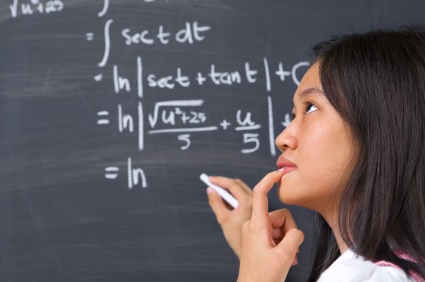California's Independent strongholds and the political calculus of the top-two open primary

Political insiders all over California are scrambling to make sense of how the state's newly-drawn legislative districts might affect next year's elections. Any such calculations are made all the more difficult by virtue of the fact that next year's elections will also be held under the state's new top-two open primary system.
An important question many are asking is 'Where are the Independent strongholds in California's political landscape?'
As reported here yesterday by Christopher Guzman, 44% of Californians are registered as Democrats, 31% are Republicans, 20.4% are decline-to-state voters, or Independents, and just under 5% are registered with a third party. Over the last four years, there has been a slight decline in the number of registered Republicans as well as a slight increase in the number of Democrats and Independents.
An analysis of the new maps that have been drawn up by California's Citizens Redistricting Commission reveals that there are twelve State Assembly districts and six State Senate districts in which the percentage of decline-to-state voters is significantly greater compared to the state at large. The state legislative district with the highest percentage of Independents is AD19 in West San Francisco, where 31% of voters are registered Independent. Indeed, there are more than twice as many decline-to-state voters as Republicans in this majority Democratic district. Just 13% of AD19's voters are registered Republican, while 53% are Democrats.
No less than six Democrats have already expressed interest in running for the open seat, including two Daly City council members and the current San Francisco Assessor. To get a sense of the potentially surprising effects inherent in the top-two open primary system, let's assume for the sake of argument that six Democrats, a Republican, an Independent and a third party candidate from the Green or Peace and Freedom Party (it is west San Francisco after all!) were to run in the district's primary election next year.
One might easily conclude that two Democrats would be assured the top two spots in the primary and head to the general election, since it is a Democratic majority district. But, if there were a Democratic favorite supported by half of all registered Democrats, with the rest of the district's Democrats more or less equally supporting the other five Democrats in the race, the Republican, Independent or third party candidate could easily advance to the general election with as little as 8-10% support in the primary, depending on how the district's Independents vote. It is for this precise reason that the state's Democratic and Republican parties are considering holding caucuses or conventions prior to any such primary elections, to nominate the candidate who would be the "official" representative of the party at those elections and hopefully avoid splitting their party's vote.
In the State Senate, one of the districts with the highest percentage of decline-to-state voters is SD 39 in San Diego. The district leans Democratic, but the difference in registration between the two major parties is relatively small. Democrats account for 38% of its voters, while 31% are registered Republican and 26% are Independent. Its current representative, Democrat Christine Kehoe, is term-limited, and the seat will be open in 2012, which will likely lead to an influx of declared candidates. Assemblymember Marty Block has already expressed interest in seeking the office. Though the Democrats hold a registration advantage in the district, a Republican or Independent could very well end up in the general election.
Interestingly, the majorty of the new State Assembly and State Senate districts with the highest levels of registered decline-to-state voters are all in the San Francisco Bay Area and environs: seven out of twelve in the Assembly, and four out of six in the Senate. The remainder are in Los Angeles County and San Diego.




